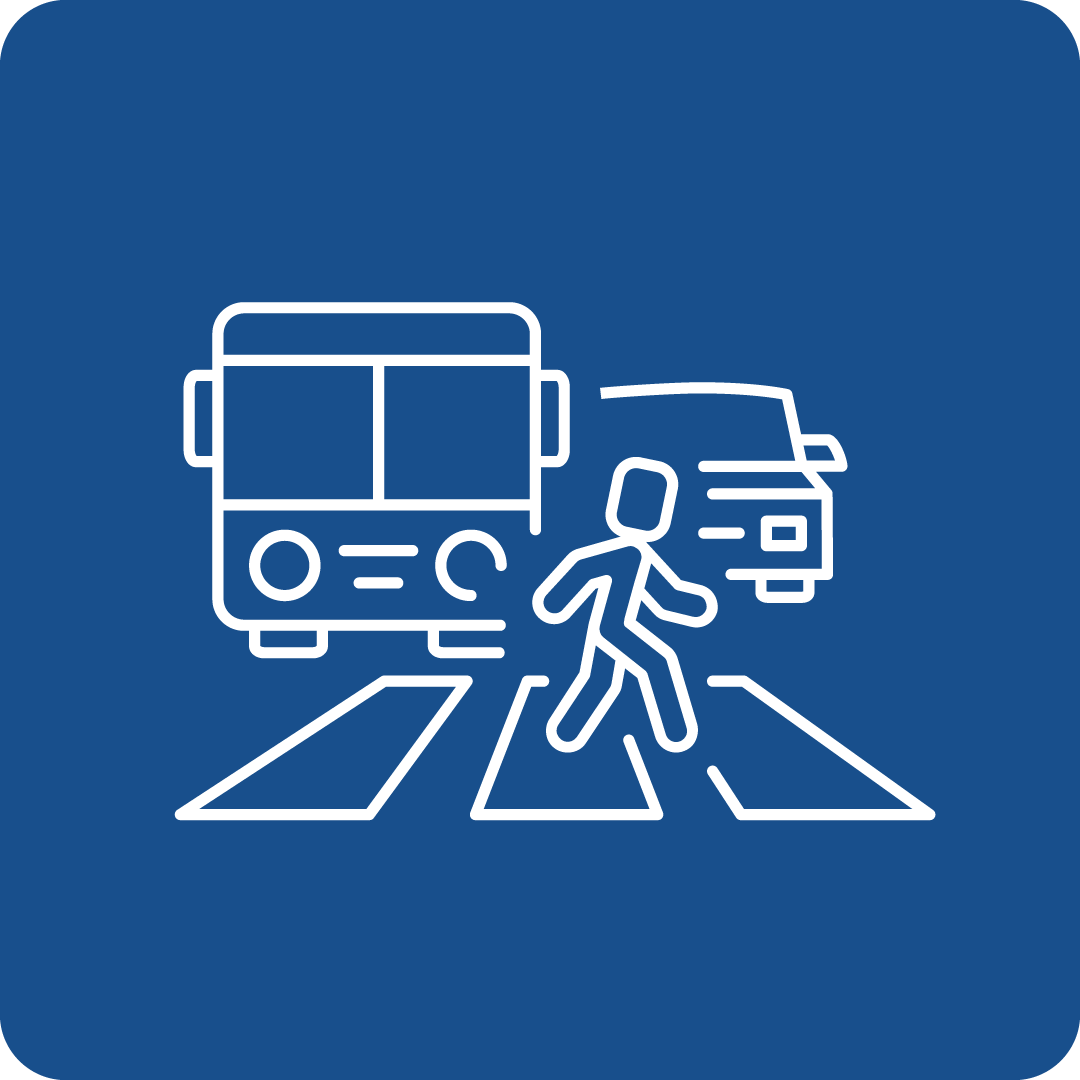Filter Search for grants
Call Navigation
Deadline expired
The deadline for this call has expired.
Call key data
Urban Mobility Explained (UMX) Open Call
Funding Program
European Institute of Innovation and Technology
deadlines
Opening
02.07.2025
Deadline
30.09.2025 17:00
Funding rate
75%
Call budget
€ 4,000,000.00
Estimated EU contribution per project
max. € 700,000.00
Link to the call
Link to the submission
Call content
short description
EIT Urban Mobility invites organisations and experts to submit proposals to its Urban Mobility Explained (UMX) Open Call, designed to accelerate the development and delivery of high-quality, sustainable professional training and support services that close the urban mobility knowledge gap.
Call objectives
This call focuses on a series of specific activity areas aimed at enhancing the skills and capabilities of mobility professionals and organisations, particularly at the local/city level, to achieve systemic transformations for more liveable cities. The Call supports proposals that offer high-quality, impact-oriented, and financially sustainable learning experiences, leveraging EIT Urban Mobility’s network and expertise in various learning formats.
The Programme ise seeking proposals that align with the strategic objectives of EIT Urban Mobility’s Academy, fostering innovation and entrepreneurship through a lifelong learning approach, and demonstrating potential for replication and scaling up. Emphasis is placed on courses that comply with EIT Label certification where applicable.
Expected results
The following seven types of activities are eligible under this Call:
- CHA1: Face-to-face course(s) development and commercialisation
- CHA2: Face-to-face course(s) complying with the EIT Label, design and delivery
- CHA3: Face-to-Face course(s) complying with the EIT Label, development and commercialisation
- CHA4: Replicating, scaling-up, remodelling, sale of successful commercial courses and training programmes
- CHA5: Replicating, scaling-up, remodelling, delivery of successful EIT Label courses
- CHA6: Upgrading, scaling-up, remodelling of non-UMX commercial courses or repurposing non-UMX commercial courses to UMX audiences
- CHA7: Training operations support services and delivery for custom course pathways
The Urban Mobility Explained (UMX) Open Call supports activities that demonstrate clear alignment with the strategic objectives of EIT Urban Mobility’s education and training portfolio, ensure compliance with the EIT Label requirements where applicable, and show strong potential for long-term impact, scalability, and financial sustainability.
read more
Eligibility Criteria
Regions / countries for funding
Moldova (Moldova), Albania (Shqipëria), Armenia (Հայաստան), Bosnia and Herzegovina (Bosna i Hercegovina / Босна и Херцеговина), Canada, Faeroes (Føroyar / Færøerne), Georgia (საქართველო), Iceland (Ísland), Israel (ישראל / إِسْرَائِيل), Kosovo (Kosova/Kosovë / Косово), Montenegro (Црна Гора), Morocco (المغرب), New Zealand (Aotearoa), North Macedonia (Северна Македонија), Norway (Norge), Serbia (Srbija/Сpбија), Switzerland (Schweiz/Suisse/Svizzera), Tunisia (تونس /Tūnis), Türkiye, Ukraine (Україна), United Kingdom
eligible entities
Education and training institution, International organization, Non-Profit Organisation (NPO) / Non-Governmental Organisation (NGO), Other, Private institution, incl. private company (private for profit), Public Body (national, regional and local; incl. EGTCs), Research Institution incl. University, Small and medium-sized enterprise (SME)
Mandatory partnership
No
Project Partnership
This Call for Proposals is open to all legal entities established in the Member States of the European Union, and/or in Third countries associated with Horizon Europe. These legal entities may be small and medium enterprises (SMEs), universities, research and technology organisations, cities or large businesses, among others.
This Call is open to multi-participant proposals and mono-participant proposals. All proposals submitted by the cut-off dates in 2025 must have a minimum co-funding rate of 25%. This may be revised in the following cut-off dates. The minimum co-funding rate applies to the total project budget. In case of a consortium, each partner may have different co-funding rates, or even not have any co-funding, as long as the overall project co-funding meets the minimum required %. Co-funding above this rate will be positively considered during the portfolio selection process.
In the case of mono-participant proposals or multi-participant proposals involving exclusively entities from the same country, EIT Urban Mobility considers that:
- the pan-European dimension can be achieved by bringing participants from different countries onto the courses and exposing them to educational content that includes examples and case studies from different European countries. The instructors/ teaching staff are also expected to come from different European countries. In addition, a course in a specific city/region/country is internationalised/replicated in a different city/region/country. As such, these applicants are expected to deliver the first few sessions in a given market, and once the quality of the course has been demonstrated, it should be opened up to other markets, involving other players/partners, if needed.
- the knowledge triangle is integrated by involving the cities and industry partners, not only in identifying educational needs but also in designing and developing education courses in conjunction with academia. City and industry partners may also be recipients of education programmes.
other eligibility criteria
Special cases
- Switzerland: Until the new legal framework governing Switzerland’s participation in Horizon Europe comes into effect, the following provisions apply:
- Up to 60,000 EUR of EIT Funding: in duly justified cases, entities established in Switzerland are eligible to participate and may receive an EIT allocation of up to 60,000 EUR per organisation for the 2026–2028 EIT Urban Mobility Business Plan.
- Above 60,000 EUR of EIT Funding: in case of Swiss entities requesting an EIT Funding above 60,000 EUR for the 2026–2028 EIT Urban Mobility Business Plan, if the entity is not eligible for funding under the national scheme (SERI), they may receive EIT funding on an exceptional basis agreed with the EIT, if the participation of the entities is deemed essential for the project.
- Temporary eligibility requirements for Hungarian universities: Due to Council measures protecting the EU budget (effective December 15, 2022), Hungarian public interest trusts and their affiliated universities may face participation and funding restrictions in any EIT Urban Mobility Calls. For details and affected entities, see the document Eligibility of Expenditure published on the Call webpage.
Duration:
Projects selected in this Call may have a duration of up to 35 months until 31 December 2028 at the latest and the project duration must be clearly justified based on the scope, complexity, and planned activities. Proposals should not default to the maximum length.
The expected tentative start date for the first cut-off projects is 1 February 2026.
All KPIs should be achieved within the project lifecycle and no later than 31 December 2028. As indicated in the Project Implementation Handbook, if during the project implementation, additional time is needed to achieve key results or KPIs, a no-cost extension may be requested and granted subject to approval.
Additional information
Topics
Relevance for EU Macro-Region
EUSAIR - EU Strategy for the Adriatic and Ionian Region, EUSALP - EU Strategy for the Alpine Space, EUSBSR - EU Strategy for the Baltic Sea Region, EUSDR - EU Strategy for the Danube Region
UN Sustainable Development Goals (UN-SDGs)
![]()
project duration
max. 35 months
Additional Information
Before starting to draft a proposal, all applicants (Project Leader and consortium partners if any) must follow the following steps:
- Step 1: register your organisation in the EU Funding & tender opportunities portal to obtain the nine-digit Participant Identification Code (PIC number). If an organisation has already a PIC number, there is no need to register again. If you don’t know if your organisation already has a PIC number, you can verify directly on the EU Portal (click here) whether your organisation is already registered.
- Step 2:
- If you are already registered in the EIT Urban Mobility NetSuite platform (NetSuite), please log in by going to step 3.
- If you have never registered in NetSuite, please complete the Partner Information Form (PIF). If the system denies your registration because the PIC number corresponds to an already registered entity, or because your email address is associated with an existing entity, please contact servicedesk@eiturbanmobility.eu. EIT Urban Mobility may take up to two working days to process your registration in NetSuite and cannot guarantee last-minute registration requests, especially during peak periods close to the call deadline. Therefore, all project partners are strongly advised to complete their registration several days in advance to ensure successful and timely submission.
- Step 3: The Project Leader must access the EIT Urban Mobility NetSuite platform and find the open calls under menu -->Call for Proposals --> Open Calls. Submit your application form within the given deadline, including the following documentation:
- Optional: Annexes to the application form (figures, graphics, photos etc.)
Please read carefully the registration and submission process outlined in the Guidelines for Applicants document available on the Call webpage.
Important Note: Proposals must be received by the designated cut-off date to be evaluated during that review period. If you begin an application during one cut-off period but plan to submit it for a later deadline, you must start a new application form. Each submission period requires a separate and complete application. This procedure applies to all cut-off periods. Submissions received after the final cut-off date will not be considered.
Call documents
Urban Mobility Explained (UMX) Open CallUrban Mobility Explained (UMX) Open Call(556kB)
Contact
To see more information about this call, you can register for free here
or log in with an existing account.
Log in
Register now

